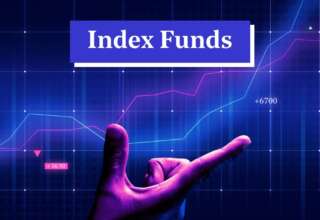
Before opting to invest in mutual funds, one of the many things that many investors are generally known for focusing on is the past performance of a mutual fund scheme. However, a lot of prospective investors forget to ask a crucial question. The said vital question is “will this mutual fund scheme perform well in the future?” The performance of a particular mutual fund scheme is signified by the net asset value (NAV). Simply put, the NAV can be defined as the market value of the securities that are held by the mutual fund scheme. Mutual funds are known for using the money collected from investors to allocate funds to market securities. As the market value of securities is known for changing every day, the NAV of a scheme is also known for varying on a day-to-day basis. The NAV per unit can be defined as the market value of securities of a scheme that’s divided by the total number of units of the scheme on a given date.
What is net asset value (NAV)?
As stated before, a net asset value (NAV) is the market value of all securities that a mutual fund scheme is holding. The performance of a mutual fund scheme is known for being denoted by the NAV. You can calculate the NAV per unit of your mutual fund scheme by dividing the total number of units of the mutual fund scheme on a specific date by the market value of the securities of the mutual fund scheme. The net asset value or NAV, in simple words, can be defined as the price you are required to pay for the units of the mutual fund scheme. Usually, mutual fund units are known for beginning with a unit cost of ₹10. And, it may rise when the fund’s assets under the management of the fund manager grow.
How is NAV known for being relevant to investors?
While opting to sign up for a mutual fund scheme, you must avoid focusing just on the NAV of the mutual fund. So, you should not select a mutual fund scheme only because it has a lower net asset value. The NAV generally does not reflect the future performance of the mutual fund scheme. The NAV is just the price at which you may either purchase or even redeem units of your mutual fund scheme. While investing, you will learn that the NAV of the mutual fund is of low significance, because you must base your investment decisions on factors such as your time horizons, risk appetite, and investment objectives.
Is there a difference between NAV & Market Price?
The market price of a share can be determined by the demand and supply and even the analysts’ views on the business’s future performance. On the other hand, the NAV is determined by the AMC once the trading day comes to an end. NAV also considers the closing market prices of the underlying securities that are considered to be part of the mutual fund scheme.
What is the role of NAV in the performance of a mutual fund scheme?
A common misconception amongst a lot of investors is that they think the net asset value is just like the price of the stock. This leads them to believe that a fund that comes with a lower net asset value is cheaper and therefore a better investment options. However, that couldn’t be further from the truth. The NAV is not an indicator of the performance of a mutual fund scheme. A lower net asset value alone does not make a scheme a better investment choice or vice versa. Therefore, the NAV alone should not serve as the sole determining factor in choosing a mutual fund scheme.
What are the essential parameters for NAV in mutual funds?
There is no firm answer to this question. While many think that the NAV is an indicator of a mutual fund’s performance. But that’s not the case. The decision to sign up for a mutual fund scheme should be solely made after ascertaining your investment objectives.













